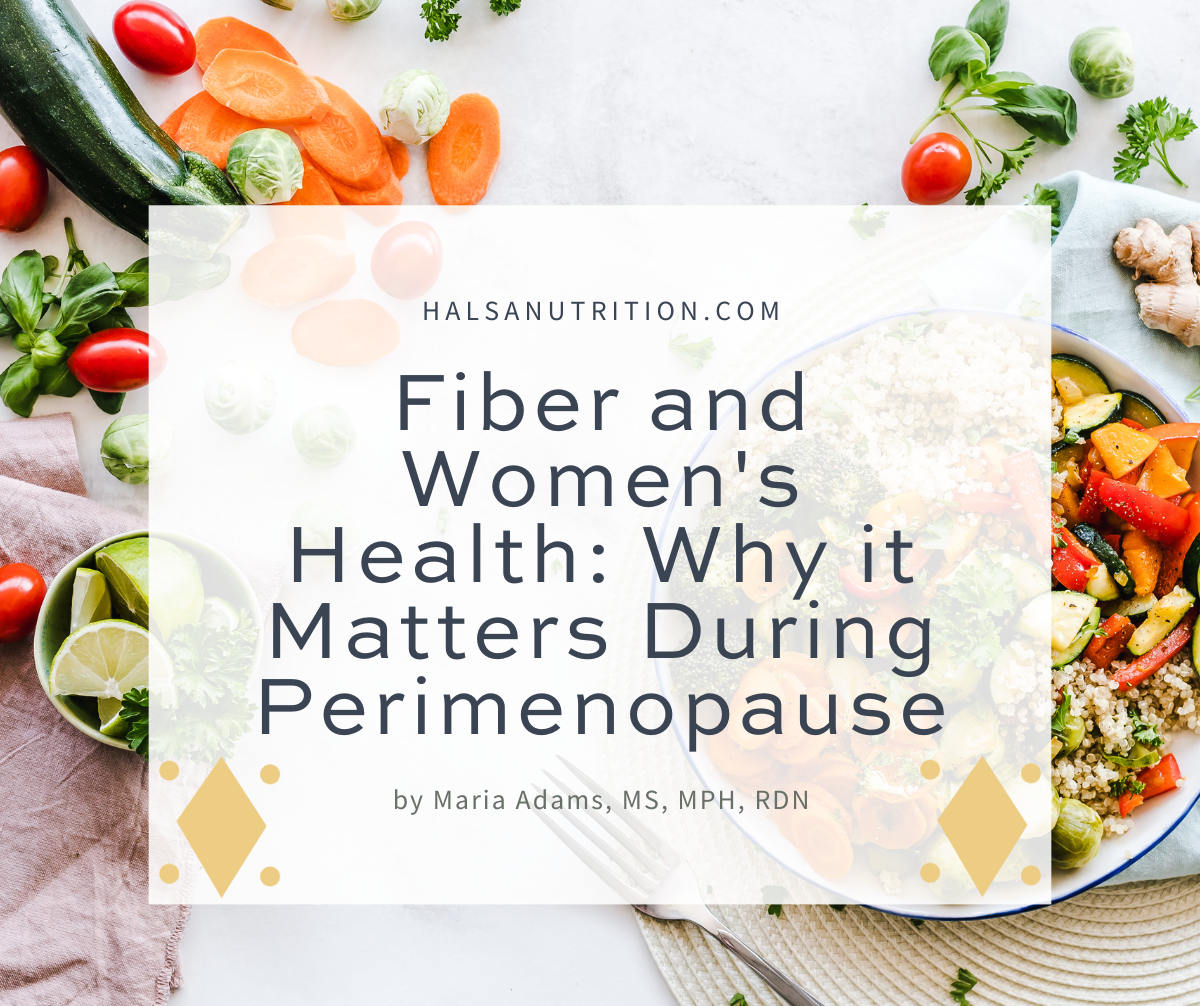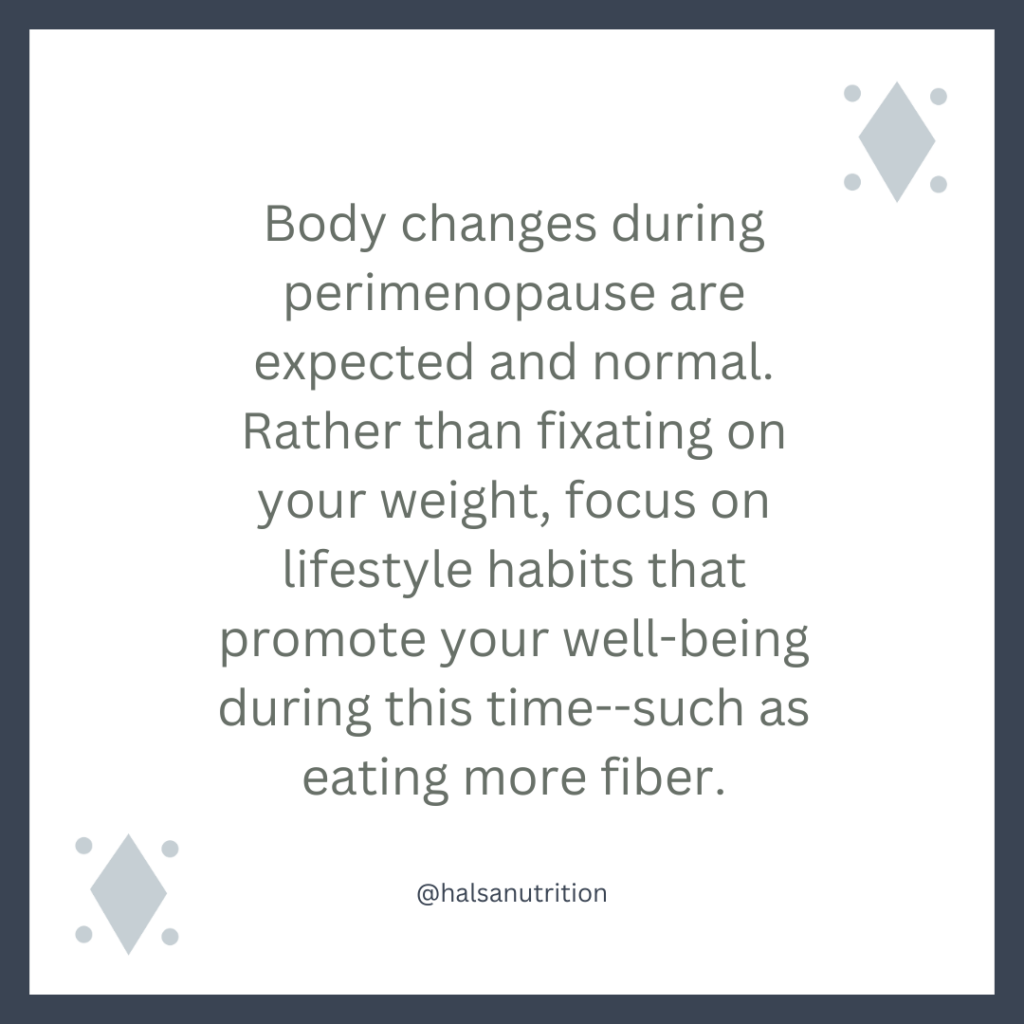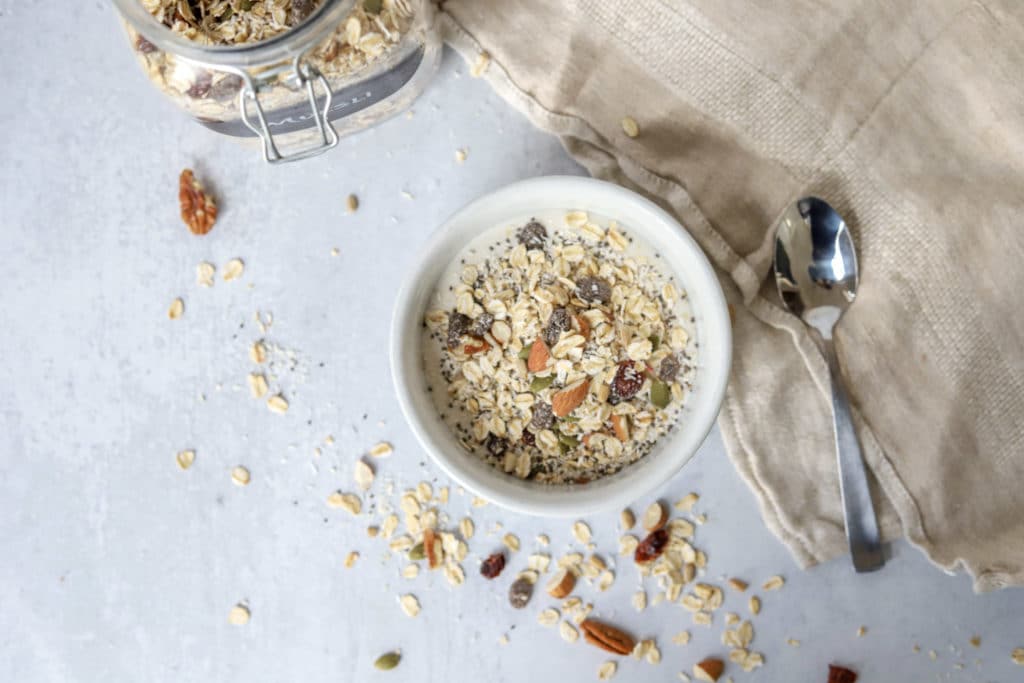
Fiber and Women’s Health: Why it Matters During Perimenopause
Estimated reading time: 6 minutes
As women approach midlife, our bodies start to shift in sometimes confusing ways. Perimenopause—the transition leading up to menopause—can bring symptoms like fatigue, digestive changes, weight fluctuations, mood swings, and more. If you’re in this phase of life, you’re not imagining it. Your hormones are changing, affecting everything from how you feel to how your body digests food.
Nutrition can be a supportive part of navigating this time, and one small but powerful player in the mix is fiber. This humble nutrient doesn’t get much attention, but fiber plays a big role in how we feel, especially during perimenopause and beyond.
Let’s take a look at how fiber can support you during perimenopause can you without requiring you to obsess over numbers, calories, or restrictive food rules.
What Is Fiber?
Fiber is a type of carbohydrate, but unlike other carbs, it’s not broken down and absorbed in the small intestine. Instead, it passes through your digestive system, doing all sorts of helpful things along the way.
There are two main types of fiber:
- Soluble fiber dissolves in water and forms a gel-like substance. It can help regulate cholesterol and blood sugar.
- Insoluble fiber doesn’t dissolve but adds bulk to stool, helping keep things moving in your gut.
Fiber is found in plant foods, including whole grains, fruits, vegetables, beans, lentils, seeds, and nuts.
Gentle Support for Weight and Energy Changes
Body changes during perimenopause are expected. Many women notice shifts in body composition, energy levels, and appetite during this time. It’s important to emphasize that midlife weight gain is okay and normal. A main reason for weight gain during this time is the natural slowdown in metabolism that happens with age. While strength training can help boost metabolism by building back lost muscle, there’s generally still some weight gain that occurs.
Rather than fixating on weight changes, focus on lifestyle habits that promote overall well-being, such as eating more fiber. Unlike diets that promise weight loss and promote disordered eating, fiber can be a gentle nutrition ally during this time.
High-fiber foods can help you feel more satisfied after meals, support steady blood sugar levels, and reduce energy crashes. This doesn’t mean you need to micromanage your meals—just that including fiber-rich foods when you’re able can help you feel more energized and grounded throughout the day.

Caring for Your Heart
Perimenopause and the years after menopause are a time when heart health becomes more critical. Estrogen plays a protective role in the cardiovascular system, and as estrogen levels start to decline, it can affect cholesterol and blood pressure.
Soluble fiber, found in foods like oats, apples, and flaxseed, has been shown to support healthy cholesterol levels. Adding these foods can be an act of self-care, not something to obsess over, but something that can make you feel good from the inside out.
Supporting Digestion (Because Things Can Get… Slower)
One of the most common complaints in perimenopause? Constipation and bloating. As hormones fluctuate, digestion can slow down.
Fiber helps keep things moving and can ease some of that sluggish, uncomfortable feeling. Think of it as giving your digestive system a little extra support, especially when it’s feeling out of sync.
Supporting Hormones Through Gut Health
One of fiber’s lesser-known benefits is that it helps your body process and eliminate excess estrogen. During perimenopause, estrogen levels can fluctuate wildly. Fiber, especially soluble fiber, feeds your gut bacteria and helps keep your digestive system humming along. A healthy gut helps your body break down and excrete hormones efficiently, creating a more balanced internal environment.
This isn’t about “detoxing” or eating “clean”—concepts rooted in diet culture and without scientific support—it’s about supporting your body’s natural processes with foods that help you feel better.
Mind-Gut Connection: Fiber & Mood
You might not think of your gut when you’re anxious, irritable, or low—but there’s a strong connection between the gut and the brain. The bacteria in your digestive tract communicate with your brain and help regulate mood-related chemicals like serotonin.
Feeding your gut fiber-rich foods can help support this mind-gut connection, which may help you feel more emotionally balanced—again, not as a “cure” but as one piece of the bigger wellness picture.
How Much Fiber Do You Really Need?
Most women in midlife benefit from around 25 grams of fiber a day—but this isn’t about hitting a number perfectly. It’s about noticing how your body feels and adding fiber in a way that feels good and sustainable.
If you’re adding more fiber to your meals, go slowly and be sure to hydrate. Too much too quickly can cause bloating or discomfort, and that’s not the goal.

Gentle Ways to Add More Fiber (No Tracking Required)
Here are a few simple, low-pressure ways to get more fiber:
- Sprinkle chia or flax seeds into oatmeal or yogurt.
- Add beans or lentils to soups, stews, or pasta dishes.
- Include a variety of veggies with meals when you can.
- Include fiber-rich snacks, such as popcorn, pears, apples with skin, or trail mix.
- Try whole grains like quinoa, farro, barley, or brown rice when it sounds good.
- Bake with whole grains, try spelt flour, oat flour, and millet flour.
Starting the day with a fiber-rich breakfast is a great way to improve your likelihood of getting enough fiber. Not skipping meals and including fiber with snacks also helps. The key here isn’t perfection—it’s curiosity. Notice how different foods make you feel and adjust based on your body’s feedback.
Final Thoughts
Perimenopause is a time of transition, and that can be challenging—but also empowering. Nourishing yourself doesn’t have to mean restriction, dieting, or following rules. Adding more fiber to your day is one way to support your well-being in a sustainable, body-respecting way.
Listen to your body, trust its wisdom, and know that caring for yourself can be as simple as choosing foods that help promote health. Remember to maintain a flexible, non-diet approach, and be sure to show yourself plenty of compassion and love along the way.
High Fiber Recipe Ideas
- Bean and Barley Veggie Chili
- Farro Lunch Salad – Three Ways
- Lentil and Roasted Veggie Salad in a Jar
- Spelt Waffles
- Cocoa-Coconut Bliss Balls
- The Best Cardamom Carrot Zucchini Muffins
- Raspberry Chia Seed Jam
- Vanilla Overnight Oats
About the author
Maria Adams, MS, MPH, RDN, LDN, a registered dietitian and Certified Intuitive Eating Counselor. Maria takes a weight-inclusive approach and helps individuals rediscover the joy of food, learn how to nourish to feel their best, and heal from chronic dieting and disordered eating. She holds a Bachelor of Science Degree in Nutrition, a Master of Science in Nutrition Communication, and a Master of Public Health.
Leave a Reply